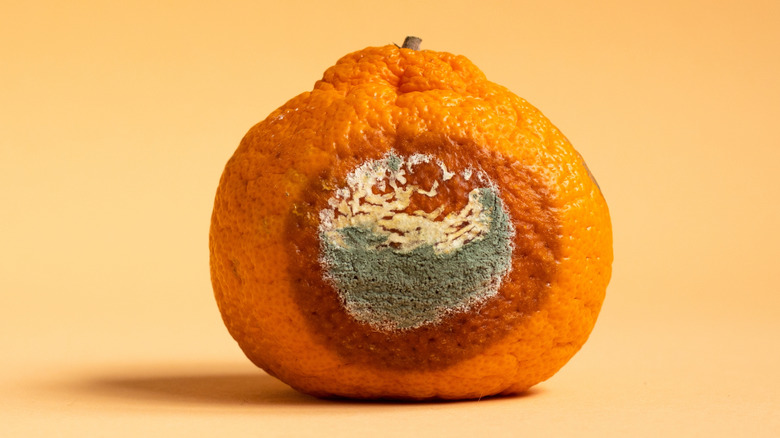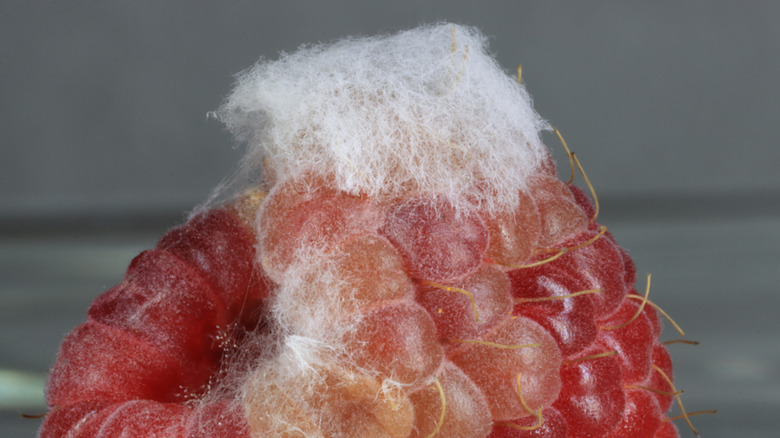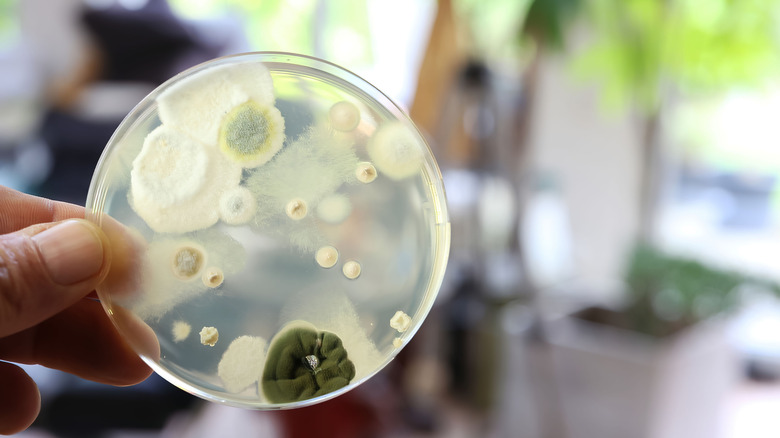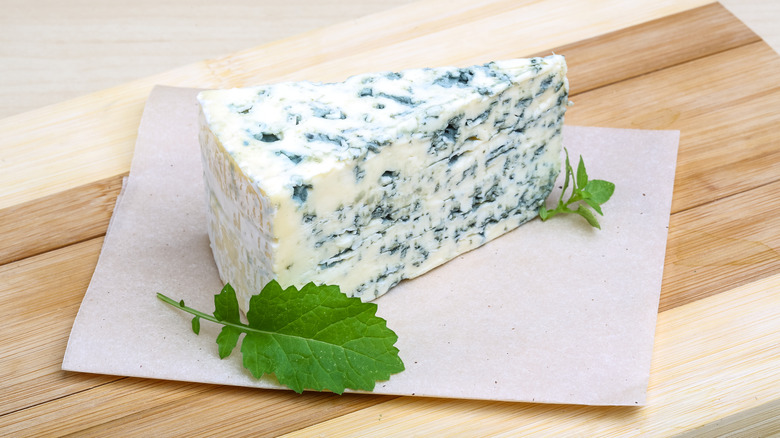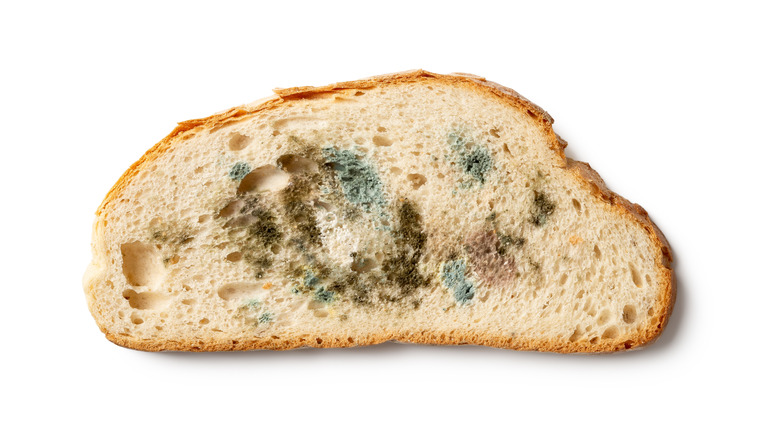So You Accidentally Ate Mold. Here's What Happens Next
It's hard not to panic once you discover that the fruit or slice of bread you just took a bite out of had a spot of mold on it. After all, we're taught that eating the furry-looking substance can make you sick. But can eating mold actually make you ill, and if so, to what degree?
The answer is a little complicated — if you only eat a bite or two of moldy food before you catch the issue, you'll probably be okay. That's because the acid in your stomach is strong enough to break it down and render it harmless in those who are healthy. But for those who are immunocompromised, there's always a concern that the mold could cause issues such as fungal infections, which means tainted food should be particularly avoided.
Unfortunately, there are certain types of mold that can even adversely affect healthy individuals, so it's really not worth taking the risk of eating it, even if you don't want to waste that loaf of bread. The issue is that if mold is already visible on the surface of your food, there's no telling just how much is actually beneath its surface — your food might be hosting more of the stuff than you realize.
What is mold, exactly?
In essence, mold is simply microscopic fungi that proliferates by using spores. It lives on plant or animal matter, and nobody actually knows just how many types of it exist in the world. Molds are simply a natural part of the environment and prefer warmer temperatures and higher humidity to thrive, but that doesn't stop them from living in places like your refrigerator. They just grow more slowly in those environments.
There are usually multiple parts to mold — the roots, the stalks, and the spores that grow at the tip of the stalks. The spores give the mold its color, and those are the bits that can travel on air currents to latch onto other surfaces and spread. Being able to see the spores is one thing, but since the roots can form a network beneath the surface of the food, you can't see how far the mold has spread inside a given food item. This is why cutting a moldy section off of something isn't a guarantee that you're eliminating the fungi.
Why are some types of molds dangerous?
Some types of mold are considered particularly dangerous because they produce what are known as mycotoxins, which are poisons that can get you sick. Those molds grow on crops such as apples, spices, nuts, and cereal grains, but they can be particularly prevalent in coffee. Don't fret about your cup of morning joe just yet, however. If your coffee has been transported, stored, and roasted safely, there's nothing to worry about — that last step eliminates the mold with high heat.
The most dangerous type of mycotoxins are known as aflatoxins, which are potentially carcinogenic if you're exposed to low doses of them for a long period of time. Symptoms of acute exposure, which come about if your system has been exposed to large amounts in one sitting, are hard to pinpoint, but some people display difficulty digesting or exhibit damage to their immune system or lungs. So it's best to avoid getting there in the first place, especially if mold was already visibly evident on your food.
So what about the mold in cheese?
With all this talk about mold, it's probably hard for your mind not to wander towards the delicious and tangy blue types of cheeses, right? Fortunately, as you've probably figured, after centuries of enjoying the stuff, it turns out the mold in blue cheese is perfectly safe to eat. In fact, those safe molds are deliberately planted in the milk cultures for certain types of cheeses such as Stilton, Roquefort, Camembert, and brie, which help develop their trademark flavor.
And the white rind on those cheeses is safe to eat, too. It's known as the bloomy rind, and it is indeed mold that develops on the outside of soft white cheeses like the aforementioned brie. Eating it is just part of its enjoyment, even though not everyone's admittedly a fan of its texture and flavor. So continue digging into that stuff — it's perfectly fine to munch on off a cheese plate, and in fact, we encourage eating the rind of some cheeses.
Granted, other types of cheese can spoil and grow mold on its surface, but unlike other types of food, hard and semisoft cheeses aren't porous enough for the mold to penetrate into. Cheese is one of the few things you can slice the mold off of, provided you stick to a few general rules.
When to worry about eating mold
Like we mentioned earlier, eating a bit of the questionable type of mold shouldn't cause most of us any issues. But just watch out for some potential nausea, upset stomach, or any signs of typical food poisoning such as diarrhea, vomiting, or fever. Because if food is moldy, there's also a chance it's straight-up spoiled, which means the food you've just eaten has bacteria in it that could make you sick (of course, there's always the freaking out factor, which happens to the best of us).
So really, it is best to just bail on moldy food altogether, because if you see any whatsoever, it's likely there's more of the unappetizing substance hidden inside it somewhere. Plus, it might already be in bad shape with other pathogens lurking within it. Since the potential aflatoxins in moldy food have also been linked to severe long-term complications such as cancer, it's best not to take too many chances. Because even if you do take a gamble on it to prevent waste, you're really going to regret it if that spoiled food makes you feel sick. Besides, there was already a warning right on its surface.
